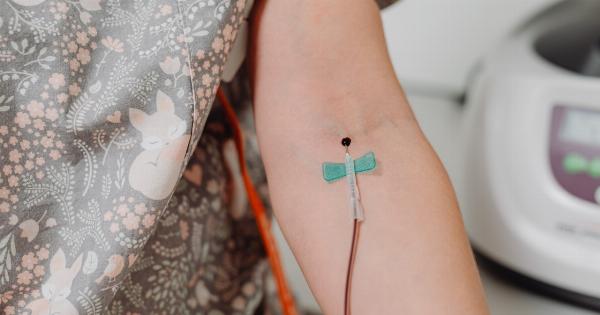Chronic venous failure (CVF) refers to the impairment of the venous system, particularly the valves within veins, that leads to inadequate blood flow towards the heart.
This condition affects millions of people worldwide and can result in a range of symptoms such as leg swelling, pain, skin changes, and venous ulcers. Fortunately, there are various treatment options available to manage and alleviate the symptoms of CVF. This article provides a comprehensive approach to the treatment of chronic venous failure, discussing both non-invasive and invasive interventions.
Non-Invasive Treatment Options
Non-invasive treatment options are usually recommended as the initial approach for CVF management, aiming to improve blood circulation and reduce symptoms.
Lifestyle Modifications
One of the first steps in managing CVF involves making certain lifestyle modifications that promote healthy blood flow:.
Compression Therapy
Compression therapy is a commonly used non-invasive treatment for CVF. It involves wearing specially designed compression stockings or bandages that apply gentle pressure to the legs, improving venous return and reducing swelling.
Elevation
Elevating the legs above the heart level helps in reducing swelling and improving circulation. This simple technique can be particularly beneficial when combined with other treatment modalities.
Exercise
Engaging in regular exercise, such as walking or swimming, helps promote blood flow, strengthens calf muscles, and aids in maintaining a healthy weight. This, in turn, can alleviate symptoms associated with CVF.
Topical Medications
Topical medications, such as creams or gels, can be used to manage symptoms like skin changes and ulcers. These products typically contain ingredients that improve circulation, reduce inflammation, and enhance wound healing.
Invasive Treatment Options
If non-invasive treatment approaches fail to provide adequate relief or if the CVF is severe, invasive interventions may be considered. These procedures are performed by trained healthcare professionals and are tailored to individual patient needs.
Sclerotherapy
Sclerotherapy is a minimally invasive technique that involves injecting a special foam or solution into the affected veins. This causes the vein walls to stick together, closing off the diseased vein.
Over time, the body reabsorbs the sealed vein, improving blood flow and alleviating symptoms.
Endovenous Laser Ablation (EVLA)
EVLA is a minimally invasive procedure that uses laser energy to heat and seal off the damaged veins. A thin laser fiber is inserted into the affected vein, and as the fiber is slowly withdrawn, it emits laser energy, causing the vein to collapse.
The sealed vein is eventually absorbed by the body, restoring healthy blood flow.
Radiofrequency Ablation (RFA)
RFA is a similar procedure to EVLA but uses radiofrequency energy instead of laser energy. The principle of heating and sealing the diseased vein remains the same.
Vein Stripping
Vein stripping is a surgical procedure where the affected veins are physically removed from the body. It is typically reserved for severe cases of CVF where other treatments have failed or are unsuitable.
Venous Stenting
Venous stenting is a procedure that involves inserting a stent, a small mesh-like tube, into a narrowed or blocked vein. The stent acts as a scaffold, keeping the vein open and allowing proper blood flow.
This option is often utilized in cases of deep vein obstruction or narrowing.
Conclusion
Treating chronic venous failure requires a comprehensive approach that considers both non-invasive and invasive treatment options. Lifestyle modifications, compression therapy, and topical medications play key roles in managing milder cases of CVF.
In more severe cases, minimally invasive procedures like sclerotherapy, EVLA, and RFA can provide long-lasting relief. In extreme cases, surgical procedures such as vein stripping may be necessary. A tailored treatment plan in consultation with a healthcare professional can help individuals with chronic venous failure regain their quality of life.





























